
New to TEDs Stockings? You’re in the right place! In this article, we’ll discuss the differences between TED stockings and compression socks, the benefits of using TED stockings, and the most effective ways to use them.
Want to Stop Leg Swelling Now?
ComproGear Compression Socks are designed to stop swelling instantly!
Click the button below to see the lineup of ComproGear Compression Socks:
What are T.E.D (Anti-Embolism) Stockings?

T.E.D. is an abbreviation of “thromboembolism deterrent,” which is a fancy way of saying that they work with the muscle pump in the calves to support venous and lymphatic drainage in the leg.
TED stockings are a type of anti-embolism stocking. They provide compression to the lower extremities, which ensures that there is no pooling of blood in the veins, consequently helping to prevent the formation of blood clots.
TED stockings are often prescribed by doctors for their patients who have had surgery and are on bed rest. Since blood clots can still form for up to six weeks following surgery or extended hospital stay, patients might need to continue to use TED socks long after they leave the hospital.
It is important to remember that anti-embolism stockings are only meant to be worn when by patients recovering from an illness or people bound to bed for a long period of time. They are not meant to be used when you are up and moving around.
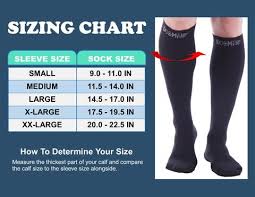
For daily active-wear, you should use regular compression stockings such as those available through ComproGear.
TED socks are available in different styles, including knee-high and thigh-high. Your doctor can help you determine which style would be best for you in your specific circumstances.
Like compression socks, patients need accurate sizing for their TED socks in order to fully benefit from them. You can take accurate measurements using a compression stocking guide like the one below.
Deep Vein Thrombosis
DVT (Deep Vein Thrombosis) is a blood clot in the deep veins of the body. It is a serious medical condition because the blood clot can break loose and travel through the bloodstream to other parts of the body.
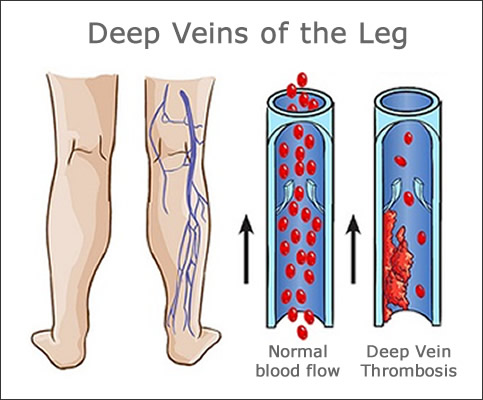
For example, it can become lodged inside your lungs and block blood circulation, causing a pulmonary embolism.
Generally, these blood clots would cause pain or swelling when they form in the legs, but sometimes DVT causes no symptoms at all.
Anti-embolism hose, like TED stockings, is recommended by hospitals because they are specifically designed to prevent the formation of these DVT.
Want to Stop Leg Swelling Now?
ComproGear Compression Socks are designed to stop swelling instantly!
Click the button below to see the lineup of ComproGear Compression Socks:
Difference Between These Two
TED Stockings vs TED Hose
In general, they are two different names given to the same thing, and the two are used interchangeably. Both are anti-embolism compression socks. Like many things in the medical community, they have taken on multiple names that get used with almost the same frequency. Occasionally, however, the terms may be used to distinguish the different styles of anti-embolism compression socks.
For example, knee-highs may be referred to as stockings, and thigh-highs may be referred to as hose.
Since this is not necessarily the case, however, you should always double-check the product description before purchasing socks to ensure they are the right style. Also, make sure that the product description says TED because that is the only way to ensure that you are actually getting anti-embolism stockings.
Compression Levels Available
Compression pressure is usually measured in millimeters of mercury, mmHg.
There are four main compression levels for TED socks:
Mild, (8-15 mmHg),
Medium (15-20 mmHg),
Firm (20-30 mmHg),
and X-Firm (30-40 mmHg).

Unlike traditional compression socks, the compression level of TED stockings is different in different parts of the leg.
Compression levels are highest at the ankles, and the pressure generally lessens the further you move up the leg. In general, you can expect a compression level of 18 mmHg at the ankle, 14 mmHg at the calf, 10mmHg at the lower thigh, and 8mmHg at the upper thigh.
Difference between TED stockings and Compression Socks
Patients may be prescribed leg compression to assist in the treatment of various medical conditions, including DVT (Deep Vein Thrombosis) as discussed above and edema (fluid retention). The treatment for these conditions is similar and involves using compression stockings or TED stockings because they both supply that pressure to the legs.
Although there are a lot of similarities between TED hose and compression stockings, they are not the same thing. Many people, including healthcare professionals, mistakenly identify all compression garments as TED hose.
Health care providers, patients, and caregivers must be aware that there are specific differences between the two and that the hose prescribed depends on patients’ unique circumstances. Using the right compression garment for the right condition would expedite healing and also keep the patient safe.
TEDs Stocking
TED hose or Thrombo-embolic deterrent socks are only used for individuals who are non-ambulatory (not walking). They are made for people who are confined to beds and are often used immediately post-surgery. These patients are especially at risk for blood pooling in the legs, which can lead to blood clots.
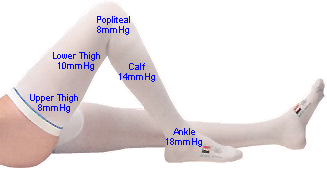
TED Stockings will help reduce this risk by administering pressure on the lower part of the feet and legs. In general, they have a compression level at or below 20 mmHg, which is the highest at the calves where blood is most likely to pool.
TED hose are typically worn for up to three weeks. After that time, patients would have either become mobile again or have undergone other preventive measures for blood clots.
Compression Legwear
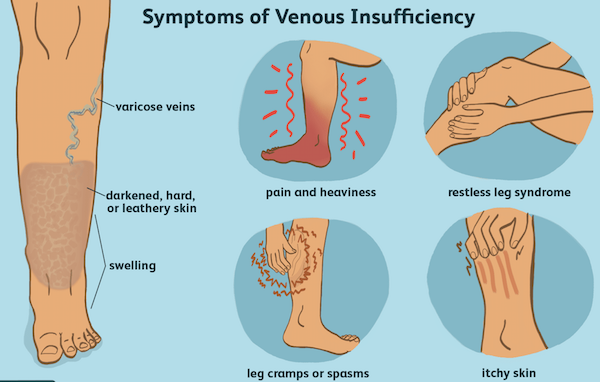
Conditions such as venous insufficiency, varicose veins, and lymphedema can be treated with compression socks. People can also use compression socks during pregnancy, travel, and long periods of standing in one place.
Compression stockings are best for patients who are ambulatory because walking aids blood return while the stockings prevent excess blood from pooling in the lower extremities.
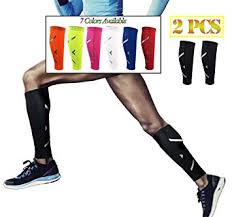
The compression levels in compression socks are generally divided into 15-20mmHg, 20-30mmHg, and 30-40mmHg categories, with some patients requiring special custom hose with pressures up to 60mmHg. The pressure level in these socks will be greatest at the ankle, where the effect of gravity is high on the veins while standing.
Want to Stop Leg Swelling Now?
ComproGear Compression Socks are designed to stop swelling instantly!
Click the button below to see the lineup of ComproGear Compression Socks:
Caring Instruction
How to Care for these Stockings?
It is important to take care of your TED stockings. Otherwise, you will not be able to fully benefit from them.
For the best care, make sure to remove oil and dirt from TED stockings to keep them in top working condition. The easiest way to do this is to rinse them out with cold water every day. Of course, if they become soiled you will need to clean them more often.

Even though the socks’ original packaging may say that they can be washed with cold water in a washing machine, we would recommend hand washing to make them last longer.
You can dry TED stockings by hanging them or laying them flat. Do not put them in a dryer because this would cause shrinking and warping in the fabric.
It is always recommended that you get two or three pairs of stockings so that you can wash and rinse them each time you use them and still have time for them to dry off completely before they are used again.
Take care of them!
How to Put Them On?

Putting them on takes a little bit of practice, but by following these steps you can eventually master the skill:
- First, the hand should be inserted into the stocking as far as the heel pocket
- Then, grab the heel pocket and turn the stocking inside out up to the heel area.
- Put the stocking over your foot and heel with the heel centered in the heel pocket.
- Pull the stocking up over the ankle and calf. The change in fabric sheerness should lie just below the knee.
- As you pull in the stocking over the thigh, rotate it so that the reinforced stitching is toward the inside of the leg. The top band should lie just below the buttocks. Make sure to smooth out any wrinkles.
Name Variation of Compression Legwear
Keep in mind that there are many types of compression socks! To determine which ones you need, refer to this list:
- Support Hose- light to medium level compression that is in a “pantyhose” style
- Support Stockings – compression that is knee-high or thigh-high in a variety of compression levels
- Compression Stockings – a generic term for compression at any level or length
- Compression Hose – any compression garments in a “pantyhose” style
- Compression Socks – knee-high garments in a variety of compression levels that can be of a sports socks style or a business socks style
- Pressure Stocking- an older term for compression stockings or socks
- Medical Compression Stockings– compression levels that are 15 – 20 mmHg and above
- Anti-Embolism Stockings – commonly known as TED Hose and typically used by non-ambulatory people recovering from surgery or illness
- Lymphedema Stockings – compression used to treat edema and other venous issues
- Athletic Compression Socks – compression socks specifically designed to be worn by athletes during exercise to increase circulation as well as improving their post-workout recovery time
The Takeaway
TED stockings are anti-embolism stockings used by patients who cannot move and are bedridden.
They are different from regular compression socks because they provide different compression levels on the ankles, calves, knee, and thigh.
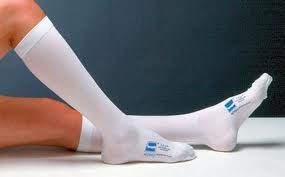
After all, if you feel like you need a pair of these anti-embolism stockings based on your medical conditions, go ahead, search for them online and add a pair to your basket or at your nearest pharmacy! Better leg health is just a mouse click away!
Want to Stop Leg Swelling Now?
ComproGear Compression Socks are designed to stop swelling instantly!
Click the button below to see the lineup of ComproGear Compression Socks:
This page last updated January 8, 2022
